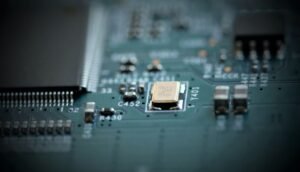Is AI Really AI
Artificial Intelligence (AI) has become an increasingly popular term in recent years, with applications in various industries. However, there is a growing debate about what truly constitutes AI and whether the technology currently being referred to as AI is genuine artificial intelligence or simply an advanced form of automation. Understanding the distinction between the two is crucial for accurately interpreting the capabilities and limitations of AI systems.
Key Takeaways:
- There is a distinction between genuine artificial intelligence and advanced automation.
- AI systems mimic human cognitive abilities but often lack true understanding.
- The current state of AI technology is more focused on narrow tasks rather than general intelligence.
- Transparent AI systems are essential for accountability and avoiding bias.
At its core, AI refers to machines or systems that mimic human cognitive abilities, such as learning from experience, problem-solving, and understanding natural language. It is designed to replicate certain aspects of human intelligence, usually through algorithms and data processing. *AI systems, however, lack consciousness and true understanding.* While they can perform complex tasks and make decisions based on patterns and data, they cannot replicate human comprehension or reasoning.
In the current landscape, most AI systems are designed for specific tasks rather than possessing general intelligence. This narrow focus allows AI systems to excel in specific domains but leaves them unable to generalize knowledge and skills across different areas. *The lack of general intelligence is a significant limitation of current AI technology.* Despite their impressive capabilities in narrow domains, AI systems remain far from achieving the kind of broad-based human-like intelligence that is often depicted in popular culture.
The Distinction: AI vs. Automation
While AI systems can be highly sophisticated and powerful, it is important to distinguish them from advanced forms of automation. Automation involves using machines or technology to replace or augment human labor, simplifying repetitive or rule-based tasks. The goal of automation is efficiency and productivity, rather than replicating human abilities. *AI can be seen as a subset of automation that adds a cognitive layer, allowing machines to learn, adapt, and make intelligent decisions based on data and algorithms.* Despite AI’s cognitive capabilities, it is crucial to recognize the difference when discussing the current state of AI technology.
Approaches in AI Development
The development of AI can be categorized into two main approaches: Symbolic AI and Machine Learning (ML) AI.
| Symbolic AI | Machine Learning AI |
|---|---|
| Focuses on explicit representations of knowledge and rules. | Relies on patterns and statistical inferences from data. |
| Requires significant manual input to define rules and knowledge. | Automatically learns patterns and rules from training data. |
| Less scalable and adaptable due to reliance on explicit programming. | Highly scalable and adaptable, particularly for complex tasks with big data. |
*While Symbolic AI has been the traditional approach for AI development, Machine Learning AI has gained significant traction in recent years due to its ability to learn from vast amounts of data automatically.* This shift in approach has led to remarkable advancements in areas such as image recognition, natural language processing, and recommendation systems.
Challenges and Considerations in AI
- Ensuring transparency in AI systems to understand the decision-making process.
- Mitigating biases that may emerge from the data used to train AI systems.
- Addressing the ethical implications of AI and its impact on human society.
- Balancing the potential benefits of AI with concerns about job displacement.
- Enhancing AI’s ability to handle ethical dilemmas and make value-based decisions.
As AI systems become increasingly sophisticated and integrated into our daily lives, there are several challenges and considerations to address. Ensuring transparency in AI is essential to understand the decision-making process and hold AI systems accountable for their actions. *Addressing biases that may emerge from the data used to train AI systems is crucial for avoiding discriminatory outcomes.* In addition, society needs to grapple with the ethical implications of AI, particularly in areas such as privacy, security, and human rights. Balancing the potential benefits of AI with concerns about job displacement is another critical consideration. Lastly, enhancing AI’s ability to handle ethical dilemmas and make value-based decisions is an ongoing area of research.
The Future of AI
While AI has made significant strides in recent years, it is still far from achieving true general intelligence. The future of AI lies in advancements that enable machines to not only perform specific tasks, but also to understand and reason across diverse domains. Progress in areas such as explainability, fairness, and robustness will play a crucial role in shaping the future of AI technology.
| Benefits | Concerns |
|---|---|
| Improved efficiency and productivity. | Potential job displacement. |
| Enhanced decision-making capabilities. | Ethical implications and biases. |
| Advancements in healthcare, transportation, and other industries. | Lack of transparency and accountability. |
*The future of AI holds immense potential for improving efficiency and productivity, enhancing decision-making capabilities, and revolutionizing various industries such as healthcare and transportation.* However, concerns regarding job displacement, ethical implications, biases, and the need for transparency and accountability must be carefully addressed as AI continues to evolve.

Common Misconceptions
Misconception 1: AI is capable of fully human-like intelligence
- AI systems are designed to perform specific tasks and lack general cognitive abilities.
- AI cannot entirely replicate human consciousness, creativity, and emotions.
- AI operates based on algorithms and lacks the intuition and subjective understanding that humans possess.
Misconception 2: AI is a threat to humanity
- AI is created and programmed by humans, and its actions are confined to its programming.
- While there are ethical considerations, AI does not possess a will or intention to harm humans.
- The potential risks associated with AI predominantly arise from misuse or lack of regulation, rather than inherent malevolence.
Misconception 3: AI will replace all human jobs
- AI is more likely to complement human capabilities rather than completely replace them.
- While AI can automate certain tasks, humans retain the capacity for complex decision-making, creativity, and emotional intelligence.
- New job opportunities are also emerging in the field of AI, requiring human expertise in developing, maintaining, and enhancing AI systems.
Misconception 4: AI is infallible and always reliable
- AI systems are prone to biases present in the data they are trained on, potentially leading to biased decision-making.
- AI can encounter difficulties in new or ambiguous situations outside the scope of its training data.
- Human oversight and continuous improvement are essential to rectify errors and ensure the responsible use of AI.
Misconception 5: AI is a recent development
- AI has a rich history, dating back several decades.
- Early AI systems focused on rule-based logic, while modern AI leverages machine learning and deep learning techniques.
- Recent advancements in AI technologies have accelerated its adoption and integration into various industries.

AI Applications
Artificial Intelligence (AI) is revolutionizing various fields, from healthcare to finance. This table highlights the wide range of applications for AI technology.
| Field | AI Applications |
|---|---|
| Healthcare | Diagnosis assistance, drug discovery, patient monitoring |
| Finance | Investment analysis, fraud detection, loan approvals |
| Transportation | Autonomous vehicles, traffic optimization, route planning |
| E-commerce | Personalized recommendations, chatbots for customer support |
| Manufacturing | Quality control, predictive maintenance, supply chain optimization |
Impact of AI on Jobs
As AI technology advances, concerns about job automation have risen. This table presents a snapshot of the impact of AI on different job sectors.
| Job Sector | Impact of AI |
|---|---|
| Customer service | Increased automation, fewer routine tasks |
| Transportation | Potential for autonomous vehicles, reduced need for drivers |
| Manufacturing | Greater use of robotics, fewer manual assembly jobs |
| Healthcare | Improved diagnostics, increased efficiency, new specialized jobs |
| Education | New opportunities for personalized learning and online education |
Ethical Considerations in AI
AI development raises important ethical questions. This table highlights some key ethical considerations surrounding AI.
| Ethical Issue | Description |
|---|---|
| Privacy | Concerns over data collection, surveillance, and personal information protection |
| Algorithmic Bias | Risks of biased decision-making based on skewed training data |
| Job Displacement | Potential impact on employment and income disparities |
| Autonomous Weapons | Moral implications of AI-controlled weaponry in warfare |
| Accountability | Challenges in assigning responsibility for AI’s actions |
The AI Arms Race
The global race to develop AI technologies has significant geopolitical implications. This table highlights countries investing heavily in AI research and development.
| Country | AI Investments and Initiatives |
|---|---|
| China | National AI plan, significant funding, and tech giants leading research |
| United States | Private sector investments, government support, and academic collaborations |
| Canada | Strong focus on AI research and development, government support |
| United Kingdom | AI sector deal, government investments, and academic partnerships |
| Germany | National AI strategy, research funding, and industry support |
AI and Cybersecurity
AI has become both a tool and a potential threat to cybersecurity. This table showcases the interplay between AI and cybersecurity.
| Area | AI’s Role |
|---|---|
| Threat Detection | AI algorithms for identifying patterns and anomalies in network traffic |
| Attack Automation | Adversarial AI used for automated attacks, evasion, and penetration testing |
| Defense Development | AI-enabled systems to strengthen cybersecurity measures and protect against attacks |
| Data Privacy | AI-based privacy solutions for secure data handling and encryption |
| Malware Analysis | AI algorithms for analyzing and identifying new forms of malware |
The Future of AI
Looking ahead, AI technology presents immense possibilities. This table outlines potential future advancements in AI.
| Advancement | Description |
|---|---|
| General Artificial Intelligence (AGI) | Achieving human-level intelligence in machines across various domains |
| Explainable AI | Developing transparent and interpretable AI systems that can explain their decisions |
| Human-Machine Collaboration | Enhancing human abilities by leveraging AI for complex tasks |
| AI in Space Exploration | Utilizing AI to advance space research, autonomous robots, and spacecraft navigation |
| Brain-Computer Interfaces | Connecting AI systems directly to the human brain for seamless interaction and control |
AI in Art and Creativity
AI technologies have also made their mark in the artistic and creative realms. This table showcases various AI applications in art and creativity.
| Application | Description |
|---|---|
| Generative Art | AI algorithms creating unique and visually striking artworks |
| Music Composition | AI systems composing original pieces of music across different genres |
| Film Production | AI-assisted editing, visual effects, and predictive analytics for film production |
| Virtual Reality | AI-driven virtual worlds and immersive experiences |
| Interactive Storytelling | AI creating interactive narratives tailored to individual users |
Investments in AI Startups
The fast-growing AI sector attracts significant investments. This table highlights notable investments in AI startups.
| Startup | Investment Amount |
|---|---|
| OpenAI | $1 billion |
| UiPath | $10.2 billion |
| Cruise | $2.75 billion |
| Celonis | $2.5 billion |
| OpenAI | $1 billion |
In conclusion, AI has become an integral part of our lives, transforming various industries and raising important ethical considerations. It impacts job sectors, cybersecurity, and even art and creativity. As AI continues to evolve, its future holds exciting possibilities such as general artificial intelligence, human-machine collaboration, and AI-powered space exploration. The global AI arms race and significant investments showcase the heightened interest and potential AI holds. However, as we embrace AI, it is crucial to ensure responsible development and address the ethical challenges it presents.
Frequently Asked Questions
What is artificial intelligence (AI)?
Artificial intelligence (AI) refers to the simulation of human intelligence in machines that are programmed to perform tasks without explicit instructions. It involves the development of computer systems capable of executing tasks that typically require human intelligence, such as speech recognition, problem-solving, learning, and decision-making.
How does AI work?
AI systems rely on algorithms and computational models that enable them to process and analyze large amounts of data. These systems learn from the data they receive, identify patterns, and make decisions or predictions based on the information provided. AI can be divided into two categories: narrow AI, which is designed to perform specific tasks, and general AI, which aims to replicate human intelligence across various domains.
What are some examples of AI applications?
AI has a wide range of applications across various industries. Some examples include virtual personal assistants (e.g., Siri, Alexa), autonomous vehicles, machine learning algorithms used in healthcare diagnostics, fraud detection systems, recommendation algorithms in e-commerce platforms, and natural language processing systems.
What are the benefits of AI?
AI offers numerous benefits, such as automation of repetitive tasks, increased efficiency and accuracy, improved productivity, enhanced decision-making capabilities, better customer experiences through personalized interactions, and the ability to process and analyze large datasets more quickly than humans.
Can AI replace humans?
While AI has the potential to automate certain tasks and improve efficiency, it is unlikely to fully replace humans. AI systems often lack the ability to understand context, emotions, and subjective experiences, which are crucial in many human-centric roles. However, AI can augment human capabilities and contribute to more effective decision-making processes.
Is AI considered a threat to jobs?
The impact of AI on jobs is a topic of debate. While AI may lead to the automation of certain jobs, it also creates new opportunities and necessitates the development of new skill sets. Some jobs may be transformed or eliminated, but new roles will also emerge in AI development, maintenance, and oversight.
What are the ethical concerns surrounding AI?
AI raises several ethical concerns, such as privacy and data security, bias in algorithms, transparency and explainability of AI decision-making processes, and the potential for AI systems to be used for malicious purposes. Additionally, there are concerns about the impact of AI on social dynamics, job displacement, and socioeconomic inequalities.
What is the current state of AI technology?
AI technology has evolved rapidly in recent years, thanks to advancements in computing power and the availability of vast amounts of data. While applications like speech recognition and image classification have seen significant progress, there are still limitations in areas such as common-sense reasoning, understanding natural language, and generalizing knowledge across different tasks.
How is AI regulated?
The regulation of AI varies across jurisdictions. Some countries have established guidelines and frameworks to address ethical and safety concerns, while others are in the process of developing regulations. Organizations and researchers working with AI are often required to adhere to ethical standards and guidelines set by professional bodies.
What does the future hold for AI?
The future of AI is promising, with continued advancements expected in areas such as machine learning, natural language processing, computer vision, and robotics. AI is likely to become more integrated into our daily lives, transforming various industries and providing innovative solutions to complex problems.




